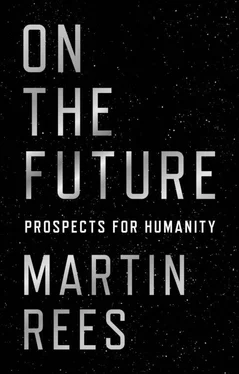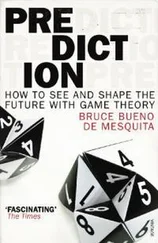It is hard for most of us mortals to take this aspiration seriously; moreover, if cryonics had a real prospect of success, I don’t think it would be admirable either. If Alcor didn’t go bust and dutifully maintained the refrigeration and stewardship for the requisite centuries, the corpses would be revived into a world where they would be strangers—refugees from the past. Perhaps they would be indulgently treated, as we feel we should treat (for instance) distressed asylum seekers, or Amazonian tribal people who’ve been forced from their familiar habitat. But the difference is that the ‘thawed-out corpses’ would be burdening future generations by choice; so, it’s not clear how much consideration they would deserve. This is reminiscent of a similar dilemma that may not always be science fiction, even if it should remain so: cloning a Neanderthal. One of the experts (a Stanford professor) queried: ‘Would we put him in a zoo or send him to Harvard?’
2.2. CYBERTECHNOLOGY, ROBOTICS, AND AI
Cells, viruses, and other biological microstructures are essentially ‘machines’ with components on the molecular scale—proteins, ribosomes, and so forth. We owe the dramatic advances in computers to the fast-advancing ability to manufacture electronic components on the nanoscale, thereby allowing almost biological-level complexity to be packed into the processors that power smartphones, robots, and computer networks.
Thanks to these transformative advances, the internet and its ancillaries have created the most rapid ‘penetration’ of new technology in history—and also the most fully global. Their spread in Africa and China proceeded faster than nearly all ‘expert’ predictions. Our lives have been enriched by consumer electronics and web-based services that are affordable by literally billions. And the impact on the developing world is emblematic of how optimally applied science can transform impoverished regions. Broadband internet, soon to achieve worldwide reach via low-orbiting satellites, high-altitude balloons, or solar-powered drones, should further stimulate education and the adoption of modern health care, agricultural methods, and technology; even the poorest can thereby leapfrog into a connected economy and enjoy social media—even though many are still denied the benefits of nineteenth-century technological advances such as proper sanitation. People in Africa can use smartphones to access market information, make mobile payments, and so forth; China has the most automated financial system in the world. These developments have a ‘consumer surplus’ and generate enterprise and optimism in the developing world. And such benefits have been augmented by effective programmes aiming to eliminate infectious diseases such as malaria. According to the Pew Research Center, 82 percent of Chinese people and 76 percent of Indians believe that their children will be better off than they themselves are today.
Indians now have an electronic identity card that makes it easier for them to register for welfare benefits. This card doesn’t need passwords. The vein pattern in our eyes allows the use of ‘iris recognition’ software—a substantial improvement on fingerprints or facial recognition. This is precise enough to unambiguously identify individuals, among the 1.3 billion Indians. And it is a foretaste of the benefits that can come from future advances in AI.
Speech recognition, face recognition, and similar applications use a technique called generalised machine learning. This operates in a fashion that resembles how humans use their eyes. The ‘visual’ part of human brains integrates information from the retina through a multistage process. Successive layers of processing identify horizontal and vertical lines, sharp edges, and so forth; each layer processes information from a ‘lower’ layer and then passes its output to other layers. [8]
The basic machine-learning concepts date from the 1980s; an important pioneer was the Anglo-Canadian Geoff Hinton. But the applications only really ‘took off’ two decades later, when the steady operation of Moore’s law—a doubling of computer speeds every two years—led to machines with a thousand times faster processing speed. Computers use ‘brute force’ methods. They learn to translate by reading millions of pages of (for example) multilingual European Union documents (they never get bored!). They learn to identify dogs, cats, and human faces by ‘crunching’ through millions of images viewed from different perspectives.
Exciting advances have been spearheaded by DeepMind, a London company now owned by Google. DeepMind’s cofounder and CEO, Demis Hassabis, has had a precocious career. At thirteen he was ranked the number two chess champion in the world for his category. He qualified for admission to Cambridge at fifteen but delayed admission for two years, during which time he worked on computer games, including conceiving the highly successful Theme Park. After studying computer science at Cambridge, he started a computer games company. He then returned to academia and earned a PhD at University College London, followed by postdoctoral work on cognitive neuroscience. He studied the nature of episodic memory and how to simulate groups of human brain cells in neural net machines.
In 2016, DeepMind achieved a remarkable feat—its computer beat the world champion of the game of Go. This may not seem a ‘big deal’ because it’s been more than twenty years since IBM’s supercomputer Deep Blue beat Garry Kasparov, the world chess champion. But it was a ‘game change’ in the colloquial as well as literal sense. Deep Blue had been programmed by expert players. In contrast, the AlphaGo machine gained expertise by absorbing huge numbers of games and playing itself. Its designers don’t know how the machine makes its decisions. And in 2017 AlphaGo Zero went a step further; it was just given the rules—no actual games—and learned completely from scratch, becoming world-class within a day. This is astonishing. The scientific paper describing the feat concluded with the thought that
humankind has accumulated Go knowledge from millions of games played over thousands of years, collectively distilled into patterns, proverbs and books. In the space of a few days, starting tabula rasa, AlphaGo Zero was able to rediscover much of this Go knowledge, as well as novel strategies that provide new insight into the oldest of games. [9]
Using similar techniques, the machine reached Kasparov-level chess competence within a few hours, without expert input, and similar prowess in the Japanese game of Shogi. A computer at Carnegie Mellon University has learned to bluff and calculate as well as the best professional poker players. But Kasparov himself has emphasised that in games like chess humans offer distinctive ‘added value’ and that a person plus a machine, in combination, can surpass what either could accomplish separately.
AI earns its advantage over humans through its ability to analyse vast volumes of data and rapidly manipulate and respond to complex input. It excels in optimising elaborate networks, like the electricity grid or city traffic. When the energy management of its large data farms was handed over to a machine, Google claimed energy savings of 40 percent. But there are still limitations. The hardware underlying AlphaGo used hundreds of kilowatts of power. In contrast, the brain of Lee Sedol, AlphaGo’s Korean challenger, consumes about thirty watts (like a lightbulb) and can do many other things apart from play board games.
Sensor technology, speech recognition, information searches, and so forth are advancing apace. So (albeit with a more substantial lag) is physical dexterity. Robots are still clumsier than a child in moving pieces on a real chessboard, tying shoelaces, or cutting toenails. But here too there is progress. In 2017, Boston Dynamics demonstrated a fearsome-looking robot called Handel (a successor to the earlier four-legged Big Dog), with wheels as well as two legs, that is agile enough to perform back flips. But it will be a long time before machines outclass human gymnasts—or indeed interact with the real world with the agility of monkeys and squirrels that jump from tree to tree—still less achieve the overall versatility of humans.
Читать дальше


![Мартин Рис - Всего шесть чисел. Главные силы, формирующие Вселенную [litres]](/books/414169/martin-ris-vsego-shest-chisel-glavnye-sily-formir-thumb.webp)









